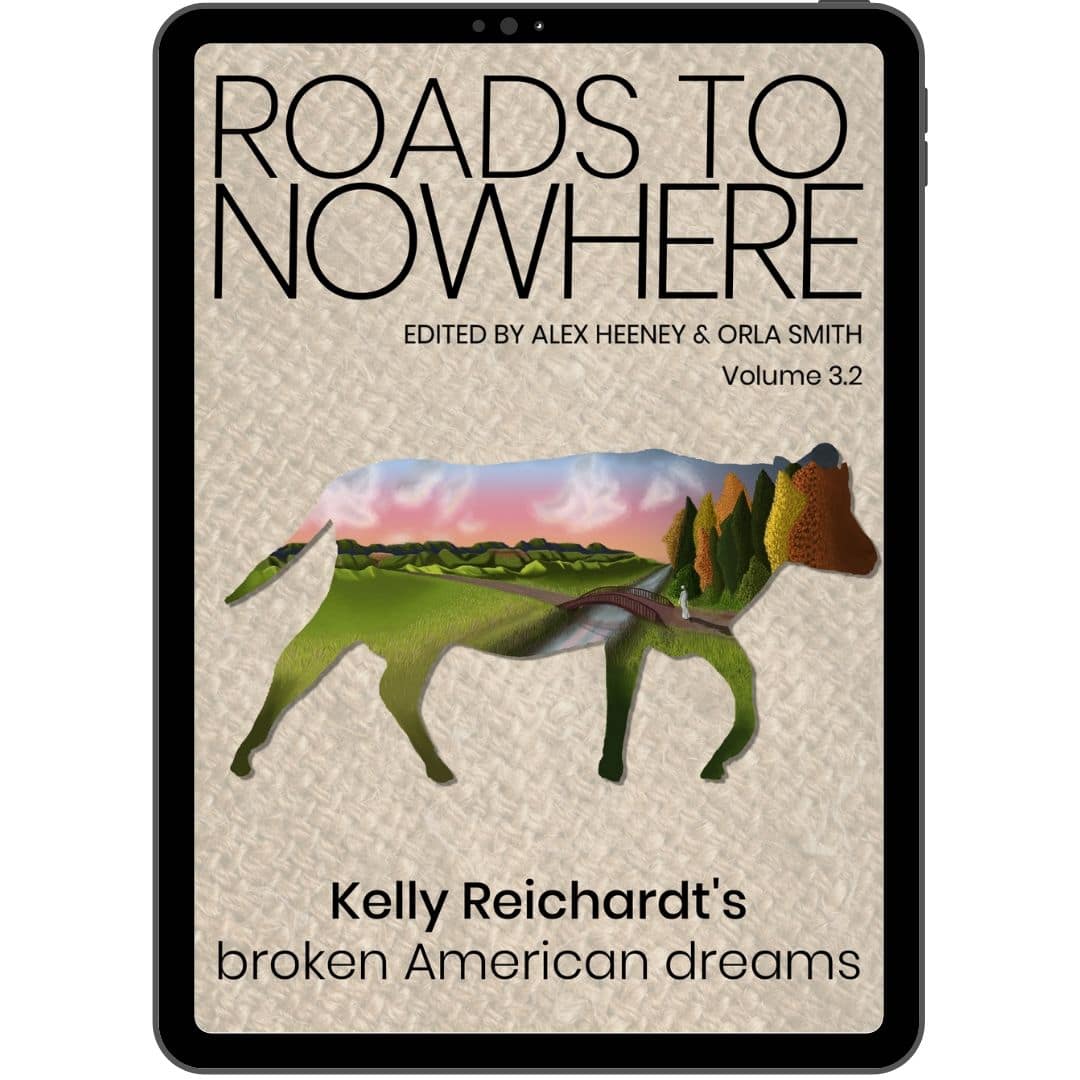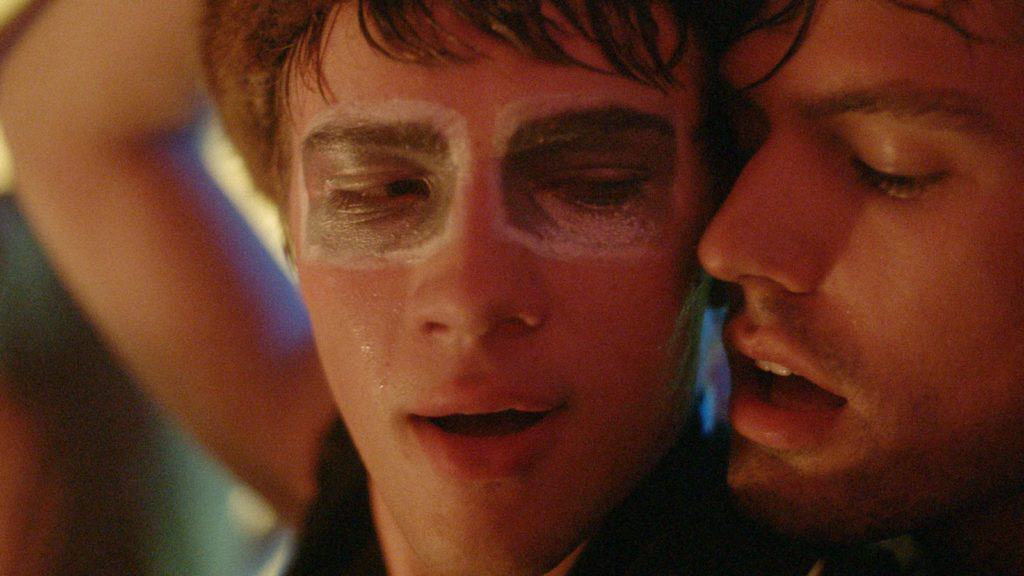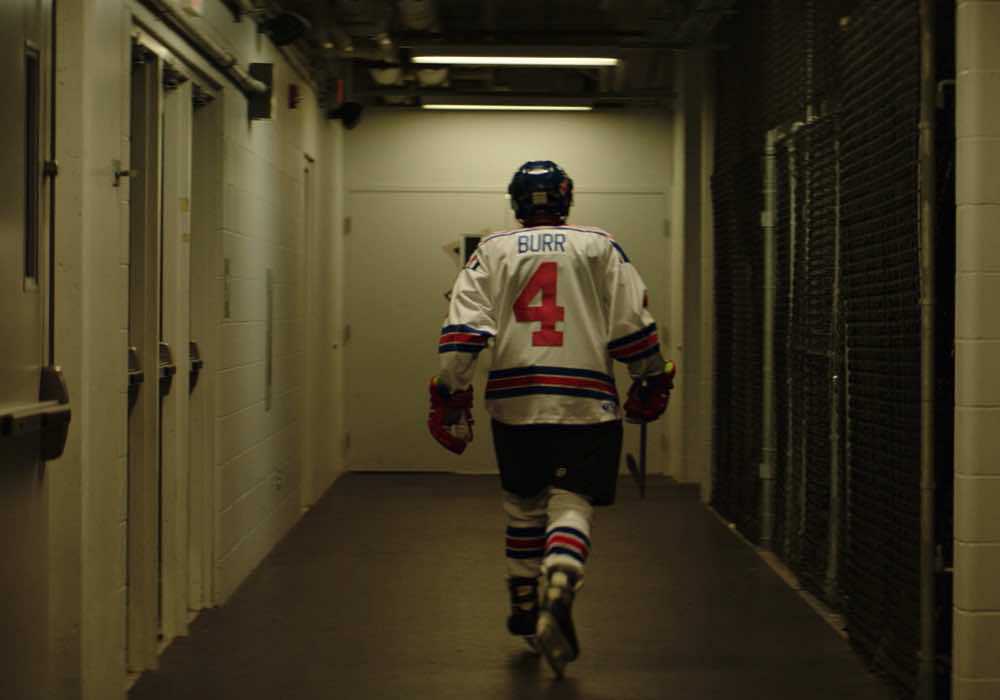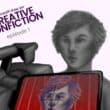Writer-director Graham Foy discusses his feature film debut, The Maiden, using duration, naturalism, and magic realism to tell a coming-of-age story of loss.
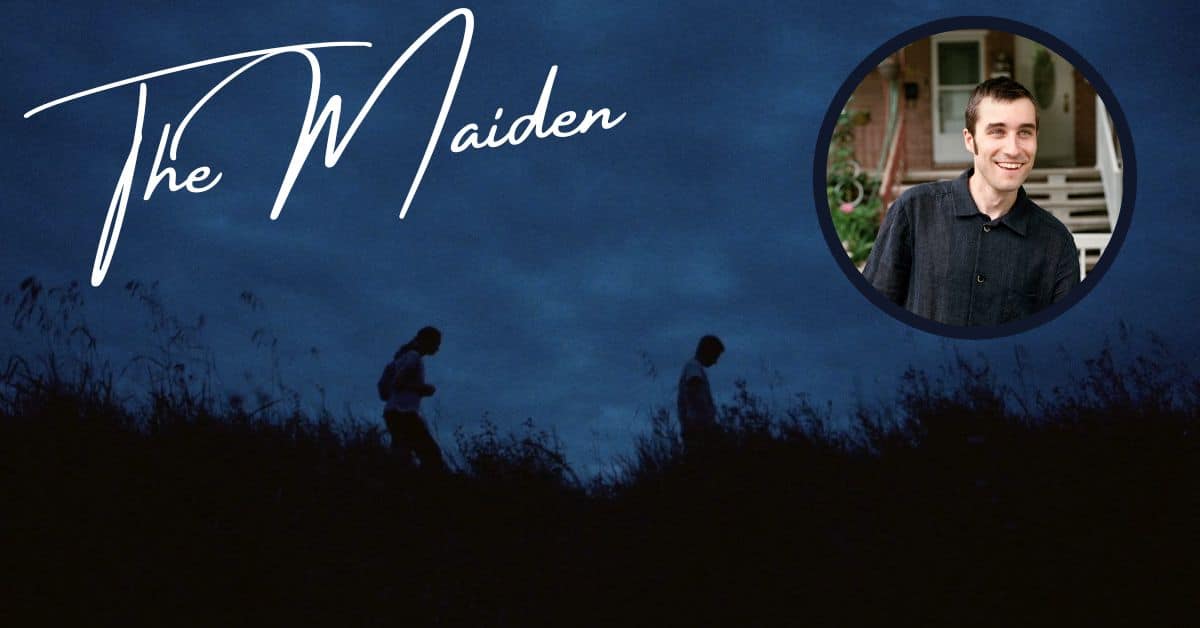
Discover one film you didn’t know you needed:
Not in the zeitgeist. Not pushed by streamers.
But still easy to find — and worth sitting with.
And a guide to help you do just that.
At first glance, the suburban neighbourhood that serves as the main setting of Graham Foy’s The Maiden appears nondescript. It’s a series of near-identical houses surrounded by open fields, forestry, and construction sites for more single-family homes. Much of the film spends its time in the fringes of this area: a nearby ravine, bridges covered in spray paint, empty parking lots, train tracks, and patches of woods yet to be replaced by the impending sprawl. The film was shot in the suburbs of Calgary, Alberta, in many of the same places where Foy himself grew up. That familiarity shines through every scene: Foy evokes a solid sense of place through mood. We see a snapshot of adolescence not as it is but as one remembers it, and how those places linger in one’s mind by how they are felt.
Foy taps into the specificity of the emotions the environment brings out, and how it intertwines with the lives of its teenage characters. Split into two halves, The Maiden starts with the story of best friends Kyle (Jackson Sluiter) and Colton (Marcel T. Jiménez), high schoolers with little to do outside of school. They spend their time hanging out by the ravine or destroying whatever they come across on empty roads and sidewalks. The aimlessness of their activities mirrors the in-between nature of where they’re at. They find themselves stuck in a figurative waiting room between childhood and adulthood, while living in an area stuck between the urban and the rural.
A story of grief and loss
Tragedy strikes one night, and Colton ends up on his own with no understanding of how to process his grief. Foy lets the film linger through long, dialogue-free stretches, and a deliberate pace as Colton works through it: awkwardly trying to assimilate into a new friend group or revisiting alone the places from earlier in the film. The weight of time, or just the uncertainty that comes with facing the future, hangs over Colton, and Foy’s patience and attention to detail makes that sensation tangible.
In The Maiden’s second half, Foy makes a surprise time jump back to the beginning of the film. Here, he follows Whitney (Haley Ness), a younger student at Kyle and Colton’s school, who finds her best friend slowly losing interest in her. Through Whitney’s story, Foy homes in on another end of a friendship, only this time defined more by inevitability than tragedy. Kyle and Colton’s story is about the boredom of one’s teenage years ruptured by a sudden event.
By contrast, Whitney experiences the gradual loss: friends’ paths diverge as they get older and come into their own. As Whitney begins to process her dissolving friendship, Foy brings the two storylines together when she crosses paths with Kyle, upending the film’s own world by introducing magical realism. It’s a bold move that pays off: the fantastical elements redefine the possibilities within the film. The change doubles as a catharsis for all three characters; they’re able to exist freely and reach a sense of closure.
Introducing our interview with Graham Foy on The Maiden
After playing the international festival circuit, The Maiden opens in Canadian cinemas this month. Before its release, we spoke with Graham Foy about his transition from short films to directing his first feature. Foy talks about the importance of location and duration in his process, as well as how his work with the young cast helped shape the final product. He also discusses the challenges around shooting on film in nighttime settings, and why and how his cinematographer and editor are such valuable collaborators.
Seventh Row (7R): You’ve made short films and music videos for almost a decade. How would you describe the transition to feature filmmaking?
Graham Foy: Making a feature is something I’ve wanted to do from the beginning. It’s obviously something that you need to work your way up to in your ability to get financing to make a longer form project. But it’s also just figuring out how you want to approach film and narrative, or not narrative. I was eager to try lots of different things at the beginning. Slowly, I discovered, and am still discovering, how I want to approach making films. I’m sure that will continue to change and evolve as I keep making projects.
I don’t know if there was ever a transition point. After [my short film] August 22, This Year (2020), I was excited to work on something longer form. I got excited about the approach of making something with people that were very close to me, something that was ambitious but also modest in scale. My partner [Daiva Zalnieriunas] and I, and [producer] Dan Montgomery, shot the whole movie ourselves. We carried the big 35mm camera around in a wagon. [We] would shoot places close in proximity to where I live. It showed me a way of making films that was more like photography. There were certain things that were obviously staged and some scenes were more observational. There was something about the process of that film that felt right to me. It made me want to pursue making The Maiden the way we did.
7R: You’ve mentioned elsewhere that when you developed The Maiden you had more narration which you decided to remove.
Graham Foy: The narration was a huge part of my writing process. Maybe that’s where my writing brain naturally gravitates to, this sort of inner voice of characters. I read a lot of books [with] first person narration. It became more apparent in the filmmaking process, especially after casting the kids, that these silences were really important. There was something even more interesting to me in the mystery of not just telling people exactly what’s going on in these teenagers’ heads. I wanted to place [the characters] in landscapes and use the camera, the spaces, and their actions to reveal some of that with a bit more subtlety.
7R: You shot The Maiden in Calgary, Alberta around where you grew up. Did you always intend to make this film in a place with such a personal connection?
Graham Foy: There was something important to me about making a film in Calgary that was about Calgary. Although I don’t think the city’s name ever comes up, so it’s not necessarily Calgary in the film. I wanted to create a version of this place that I was very familiar with, that was influenced more by memory and time than what I was actually observing in the moment.
As a filmmaker and writer, I really related to the experience of a teenager and how there [are] so many new things in life. There’s so much space for experimentation. The emotions take very big swings one way or the other.As a [first-time] filmmaker, I think I related to the fear in these new experiences.
Through that process, I tried to create something a bit more dreamlike, a space that’s not quite reality.
Calgary is a place that informed a lot of who I am. It’s a place where I spent a lot of time, especially at the age of the kids in the film. It felt right to make a film there.
[I wanted] to try to use that specificity to come up with something that many people could relate to. When artists I admire choose to work with something very familiar to them, it often ends up reaching a lot of other people. The response to the film and the specificity of place has been interesting. A lot of people in Europe are like, “It’s just Texas. It’s like America.” They don’t [see] subtlety or nuance to the different types of conservative North American places.
To me, Calgary is so specific. There’s even a specific accent the kids have that’s very unique and special to me. It was important to try to capture that in the way that I remember it.
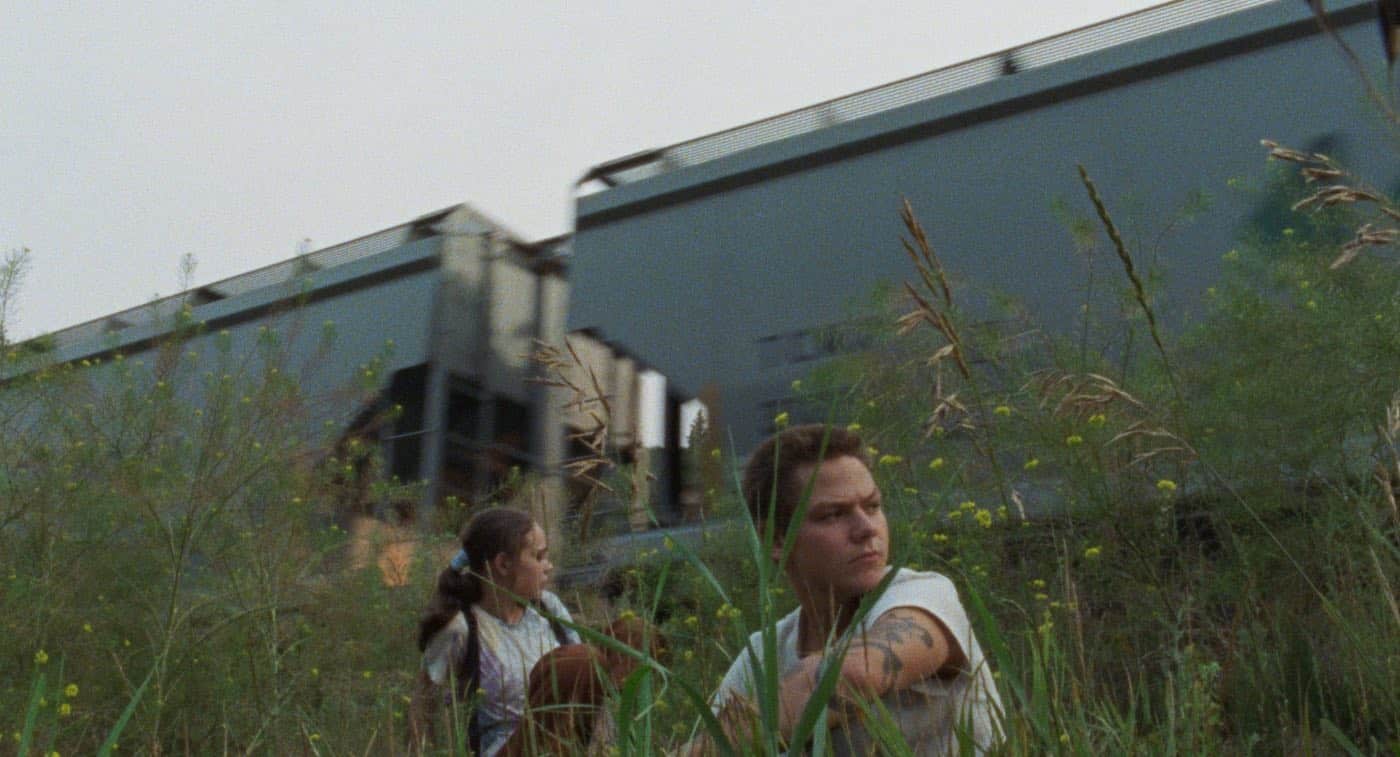
7R: I find that there isn’t really an Albertan cinema. It’s kind of like Vancouver. It’s used as a shooting location, but there’s nothing really set there. It doesn’t have an identity in the same way as a location like Toronto.
Graham Foy: That seems to be missing, even from our National Cinema in a way. I felt like maybe I could do it in a way that is a lot different than [now]. While we were shooting, [HBO’s] The Last of Us was [also] shooting. Different peripheral crew people were coming off of The Last of Us and would help us out for a day. Everybody had some sort of connection to this gigantic Hollywood production that used the Calgary and Alberta landscape to play this apocalyptic version of America. Making a film there that is not trying to hide the locations or the people, who they are and where they’re from, was important to me. To push the possibility of what that could look like, maybe as a piece of regional Canadian cinema that takes strange risks.
7R: I grew up in an area similar to the one in your film. If I walked 15 minutes in one direction, it would be all concrete. But if I walked in another direction, I would be in the middle of a forest. I never really thought of this area as a transient space before. Did you always feel this environment had a liminal quality?
Graham Foy: There was something about the conformity of the appearance of the suburbs and the lack of imagination of that built environment. As a teenager, it really did feel oppressive. I hope this doesn’t sound too angsty. There’s something about those spaces that drains you. But maybe it actually prepared you for the natural world to feel that much more alive, magical, or haunted. I remember feeling that way.
The boys are pretty destructive in the built world. There’s this boredom, and the activities tend to be more violent. In this natural space, there’s this peaceful calmness and almost [a] reverence for the spaces that they’re in, even though they’re doing graffiti on the train bridge. I was especially excited to show those connections between the characters and that natural space. How the characters behaved in different spaces were all things that I related to from when I was an adolescent.
7R: You have three distinctive personalities with Kyle, Colton, and Whitney as your protagonists. Is there one character, in particular, you find that you relate to more?
Graham Foy: I feel a really deep connection to all three of those characters and all three of the actors who play [them]. I see myself in all three in different ways. I don’t know if I could pick one, per se. Maybe Colton and Kyle because of my gender, and because [their] experiences were most directly mine. Something important to me with representing teenage boys was [to show] complexity. The contradiction of being a total loser shithead who’s smashing TVs and being destructive, and then a weirdly profound kindness. I don’t often feel this is represented in adolescent stories. At the beginning of The Maiden, I wanted to go one way with them, and then quickly reveal a gentle side of these kids. I like those surprises in film and narrative and think that they’re more true to life.
I see Whitney as the artist or the storyteller in the film. She’s this very sensitive person with a rich inner life. I really relate to her and her trouble connecting with people, but then potentially finding somebody to connect with. Those are all foundational parts of adolescence that I remember and connect with.

7R: It took about two years to cast your film. That’s a long time, especially when you’re dealing with actors who are still growing up.
Graham Foy: We were going to shoot a year [or two] before we ended up being able to shoot, because of the pandemic. That time got inflated because we were waiting. The casting process informed a lot of my writing process and what the film became. We had a lot of conversations, myself and Jackson [Sluiter], Haley [Ness] and Marcel [Jimenez], who play Colton, Kyle and Whitney. I talked to them about their experiences in high school. Then, I tried to infuse those with my own memories of my experiences and come up with something I think we all felt good and excited about.
It worked out in a very strange way with Kyle and Colton. We cast them both separately, but it turned out that they had been childhood friends. They went to different high schools and had not really hung out for a while. But they lived around the corner from one another when they were kids. There’s a photo in the film of them as kids. it’s a real photo of the two of them in elementary school. Those two had a bit of a shorthand already. Kyle really had that sort of confidence in [being] the leader of the two very effortlessly. Colton is younger, so he had a bit of a younger brother or follower approach to the relationship.
7R: What were rehearsals like with the young actors in The Maiden?
Graham Foy: They were more chemistry rehearsals, trying to get everybody acquainted. Haley and Jackson were the hardest to judge or cast without seeing them together. We did a bunch of rehearsals [to] just see what they thought of each other as people and how they might get along or relate to each other.
In one rehearsal, Jackson was trying to relate to Haley about hardcore music. He was like, “It’s this really inclusive scene. If you don’t fit in somewhere, the hardcore scene just accepts you. That’s why I like it.” Haley was kind of into that and curious. [She] was relating to him why she liked ABBA, and Jackson likes ABBA, as well. They bonded over their eclectic music tastes, which I thought was really cool because they’re so different. But I think they also have a lot of similarities. They both speak their mind in totally different ways.
7R: I assume you added the scene where they listen to ABBA together after that.
Graham Foy: Totally. Certain things made their way into the film from just seeing how they would relate to one another.
7R: You shot on film, used natural lighting, and filmed at magic hour and at nighttime. What was your preparation process like with your cinematographer to develop the look of The Maiden?
Graham Foy: [Cinematographer] Kelly Jeffrey and I have been working together for ten years. We’ve worked on a lot of different projects. We have a good shorthand. But for The Maiden, we scouted the spaces so much more.
We would take many, many photographs, and I took photographs for years before. I would go and visit my parents [who] still live very close to the ravine in the same house that I grew up in. I would photograph the spaces, and try to find little landmarks or cues that could be used to create connections between the two parts of the film. We also like to work as intuitively as we can. Sometimes, the shot is [something] we didn’t necessarily scout. There are scenes that are more improvised like that. But a lot of the film is quite mapped out.
We had this conundrum that I had written this script that had a lot of nighttime, specifically moonlight, material. To light that properly for film is quite an ordeal. It takes a lot of crew and equipment. We talked about shooting day for night for a while. But we hadn’t really seen a contemporary example of it until Kelly Reichardt‘s First Cow came out. We got really excited about how the day for night material worked in this more contemporary film. We did a lot of tests, trying to nail the day for night look. The key was that we weren’t shooting too much sky and didn’t see too many overexposed highlights in the shot. We tried to work within more neutral lighting in the forested areas.We combined that with proper blue hour material to establish the sky and the nighttime setting.
Become a Kelly Reichardt expert
Roads to nowhere: Kelly Reichardt’s broken American dreams is an ebook that will take you on a journey through Reichardt’s filmography.
It’s also the only place you can find interviews with her and all her collaborators, which together reveal Reichardt’s filmmaking process like never before.
The book features an interview with cinematographer Chris Blauvelt on how he shot day for night on First Cow.
7R: How did you approach the edit to bring about the mood of The Maiden?
Graham Foy: The editor of the film, Brendan Mills, also did my short film, August 22, This Year. Through the process of making that short, we established a pretty close working relationship. Obviously, it’s a much different process editing a two-hour movie versus fifteen minutes.
There was a lot of trial and error just figuring out the pace of the film. It was a process of watching and reviewing, and then cutting scenes down. How often should we be leaning into duration? When does duration become tedious? I’m sure that threshold is very different for every person who sees the movie.
We were trying to create a bridge between the worlds of realism and magical realism using duration. Kelly and I had talked a lot about how we were shooting the film. We didn’t know how long we would hold some of those shots. Some of the shots go on even longer than the material that we use in the edit.
Using music to create mood or tone has been really important for me. That Jon Hassell track that connects the first part to the second part [was] something I found during the writing process. I was happy that we were able to license it. It kind of held the whole thing together. [There’s] this rough allusion to the train sound, this horn sound, but it’s deconstructed. The tone of that sound was the right tone for the emotion in the film and this feeling of grief and loss. It’s the same with the Roger Miller track at the end, which I found in the writing process. There’s so much emotion and heart in that song.
7R: How and when do you start using music during the edit?
Graham Foy: It comes a bit later, and I think [it’s] partially because of Brendan’s process. I tend to be super eager. I used to edit all my own stuff, and I would make a giant mess right off the top. There is no discipline to [my] approach.
Brendan tends to be much more organised. He helps create more of a gradual, step by step [process]. He mostly focuses on image and pacing and trying to block the story out first. Then, he starts to worry about tone and mood. Whereas, in my head, I’ve been thinking about that stuff through the whole writing process. I’m excited to just see the music and see if it works.
It helps to have a collaborator who’s trying to slow things down and be a bit more deliberate. He was amazing in structuring that. He made sure that we sustained our excitement until the end of the editing process, which definitely takes a while.
7R: How about the sound design? I found there was a shift in the second half. The sound becomes more immersive in the woods with Whitney and Kyle.
Graham Foy: Absolutely. Duration really helped us to gradually descend into something that was more magical realist and hide the transition of the soundscape. Brendan was a huge part of doing the first pass of the sound. He also came to the final sound mix. We collaborated with sound designers and sound mixers to create that distinction between the real world and the magical realist world.
We didn’t want to go too far or use a visual trick but to shoot the world the way that we see it. The day for night is a slight enhancement, but we shot the world in a very straight way. Then, we used sound to create this feeling of otherworldliness.
The sound sometimes becomes more playful, especially towards the end. That could maybe give the audience some kind of answer without giving an answer at all, I felt. I also love how playful sound can work with images that are just totally straight. There’s something magical about it when you change it just slightly. I liked that for the second half of the film.
7R: I’ll end things with a broader question. How do you feel about Canadian cinema right now or where you think it might be headed?
Graham Foy: Broadly, I feel really excited and inspired by a lot of the work from new Canadian filmmakers. There is space for strange new ways of trying to tell stories. They’re not necessarily following this hegemonic way of making films. They’re not all trying to be like American indie movies. I think [there’s] a real push for experimentation. For me and my films, I feel excited to continue to try to push those boundaries within Canadian cinema.
When I’m trying to come up with a film, I’m not thinking about Canadian film and its traditions. Sometimes, I do think about the traditions in art and in the art world, how Canadian art is understood or recognised in a global perspective. A lot of it is, at least visually, recognised in our landscapes with The Group of Seven and Tommy Thompson. All these painters [are] well recognised internationally. I’m very eager to continue to explore the way that people fit into the landscape and nature in Canada. I want to create films that honour the landscapes that are here and show them in a contemporary way within the context of narrative film.
Discover more great debut films from Canadian filmmakers
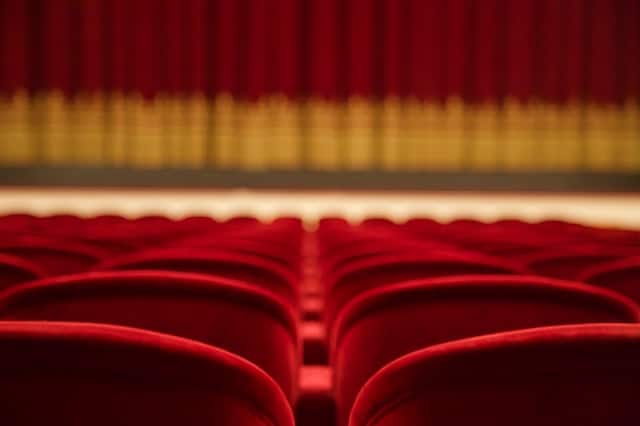
Become a Seventh Row insider
Be the first to know about the most exciting emerging actors and the best new films, well before other outlets dedicate space to them, if they even do.
